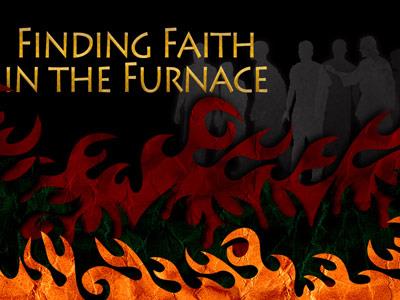-
Daniel Chapter 7b Series
Contributed by Darren Rogers on Aug 14, 2008 (message contributor)
Summary: Do you know what is going to happen next on the world stage?
Daniel – Chapter 7b
Chapter 7 Outline
I. Introduction to the Dream (7:1-3)
a. The Date of the Dream (7:1)
b. The Detail of the Dream (7:2-3)
1. The Four Winds (7:2a)
2. The Great Sea (7:2b)
3. The Diverse Beasts (7:3)
II. Information about the Dream (7:4-14)
a. The Earthly Empire (7:4-8)
1. The Lionlike Beast (7:4)
2. The Bearlike Beast (7:5)
3. The Leopardlike Beast (7:6)
4. The Terrible Beast (7:7-8)
b. The Heavenly Empire (7:9-14)
1. God’s Sovereignty (7:9)
2. God’s Sentence (7:10-12)
3. God’s Son (7:13-14)
III. Interpretation of the Dream (7:15-28)
a. Daniel’s Troubled (7:15-16)
b. Dream’s Truth (7:17-27)
1. The Five Kingdoms (7:17-18)
2. The Fourth Kingdom (7:19-26)
3. The Fifth Kingdom (7:27)
c. Daniel’s Thoughts (7:28)
Message
4. The Terrible Beast (7:7-8)
Dr. Robert Congdon suggests that this terrible beast consists of a three-phased Roman Empire.
In the first phase the beast is called dreadful and terrible with teeth of iron and stamping feet – this is the ancient Roman Empire.
The second phase it is portrayed as having ten horns – this represents a latter-day revived Roman Empire consisting of ten nations or regions
The third phase is where we see a little horn with eyes and mouth of a man comes up and replaces three of the ten horns and speaks “great things” – This is the rise to power of the Antichrist out of the revived Roman Empire.
Phase 1
In Nebuchadnezzar’s dream, this empire had been symbolised by legs of iron that took up half the total height of the image. Iron is much stronger than gold, silver or brass, therefore the iron showed the great strength of the Roman Empire.
The fact that the legs were so long reveals that the Roman Empire would far outlast the others. The Babylonian Empire lasted 70 years, the Persian Empire about 200, and the Greek Empire about 180 years. The Roman Empire lasted around 500 years, longer than the three previous empires put together.
In Daniel’s dream this fourth beast is not a common, identifiable earthly creature but is described as being “diverse” that is different or unique from all the beasts that were before it. It is dreadful and terrible, and strong exceedingly;
Rome was as strong and enduring as iron and as uncompromising as a beast on the rampage.
By 266 B.C. Rome had the entire Italian peninsula under its control. In 264 B.C. it began its wars with its rival Carthage. It absorbed Greece and Macedonia until the entire Greek peninsula was just another Roman province.
As they marched east they conquered Syria and Jerusalem, and in 30 B.C. Egypt, the last of the surviving kingdoms of Alexander’s empire was added to Rome’s ever expanding empire. By 84 A.D. they had gone as far north as Britain. Rome held all of these conquered lands with an iron grip.
The Romans built roads which seemed to bind the various territories to the capital, and the discipline of the Roman troops would soon put an end to any kind of revolt. Their laws were implemented and so was their pagan religious superstition.
The history of Rome was more bloodthirsty than that of even Persia and Greece. Among its many crimes was the crucifixion of our Lord and from Nero to Diocletian these Caesars persecuted the church ruthlessly.
Phase 2
At that time in history, when this wild beast was attacking the church, the apostle John was given further details of the beast and Phase 2 of the Roman Empire.
Revelation 13:1-3 And I stood upon the sand of the sea, and saw a beast rise up out of the sea, having seven heads and ten horns, and upon his horns ten crowns, and upon his heads the name of blasphemy. [2] And the beast which I saw was like unto a leopard, and his feet were as the feet of a bear, and his mouth as the mouth of a lion: and the dragon gave him his power, and his seat, and great authority. [3] And I saw one of his heads as it were wounded to death; and his deadly wound was healed: and all the world wondered after the beast.
John saw this beast in a resurrected form the same but different. He saw that in its final form the Roman beast would absorb the chief feature of all the previous prophetic empires. Like Daniel, John also saw the ten horns.
The ten horns correspond to the ten toes of Nebuchadnezzar’s image. They identify the beast in Daniel’s vision with the beast in John’s vision. In both cases, the symbolism points to the same thing, the end-times reappearance of the Roman Empire in a new form. In Scripture horns symbolise power.
Phase 3
What gripped and mystified Daniel was the emergence of a malignant little horn. This little horn uprooted three of its competitors. Daniel then draws special attention with the word behold, this little horn had both eyes and mouth.

 Sermon Central
Sermon Central



